Posted by · Leave a Comment
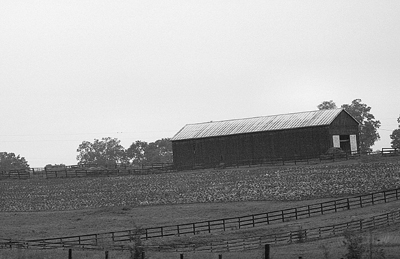
Tobacco Field and Barn of Yesteryear
When I was a child we’d make annual pilgrimages to South Carolina for family reunions. The trips from Virginia, along Interstate 95, were grueling for a girl, but one of my fondest memories is of the acres and acres of tobacco—as far as you could see. Those tobacco fields are all but gone now but the footprint of that heritage remains.
I began growing tobacco years ago, here in Pennsylvania, and loved seeing my few plants surge in growth in the warm months, finally giving way to a delicate blossom.
David cut the mighty stalks and hung the plants, inverted, to dry in the smokehouse over the winter months.
When I first mentioned I wanted to grow tobacco, I was met with the “why??” almost out of the gate. Hmmmmm. Had to act fast—I was about to take up a row of precious garden real estate with a plant I “just wanted to grow for the fun of it.” I researched the other uses of tobacco and came upon (drum roll, please): Organic Pesticide.
Nicotine in tobacco is highly toxic and will kill or repel the pests on flowering plants, fruits, and vegetables. It’s inexpensive and organic (but double-check your source).
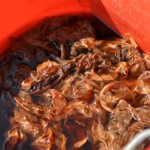
Steeping Tobacco Juice
To make your “pesticide,” combine a handful of tobacco leaves, a tablespoon of dishwashing soap and a gallon of warm water. Cover your mixture and let it steep overnight. Strain off the solids and add to a spray bottle. Coat your plants you’d like to protect—remember the underside of the leaves as well!
The cucumber beetle which wreaks such havoc tore into our pumpkin plants during it’s first life cycle (see the Cucumber Beetles blog).
Either the beetles were on the backside of their first cycle in this photo…or the tobacco juice went to work….or both.
See the new green, baby shoots?

Pumpkin Plant Coming Back

 They attack flowers and ornamentals as well as cucumbers. In fact, over 270 plants in 29 families fall prey to this little trouble-maker.
They attack flowers and ornamentals as well as cucumbers. In fact, over 270 plants in 29 families fall prey to this little trouble-maker.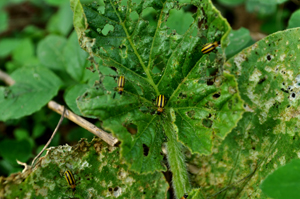 There are repellent plants which could be planted to deter the beetle and various other organic methods. (Try placing aluminum foil beneath plants to reflect light—the beetles prefer the underside of leaves because of the shade.)
There are repellent plants which could be planted to deter the beetle and various other organic methods. (Try placing aluminum foil beneath plants to reflect light—the beetles prefer the underside of leaves because of the shade.) I’m talking about “Gooseneck Loosestrife.”
I’m talking about “Gooseneck Loosestrife.”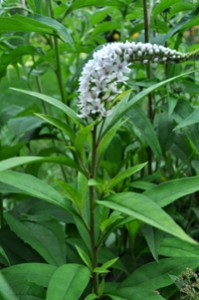 I’ve had the worst time ridding my flower beds of it. I pull new shoots constantly throughout the summer months.
I’ve had the worst time ridding my flower beds of it. I pull new shoots constantly throughout the summer months.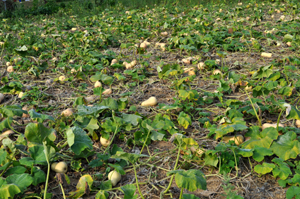 We grow rows and rows of butternut squash to allow proper garden space (after growing butternut for more than 10 years, I am still amazed at the amount of space the squash will eventually require).
We grow rows and rows of butternut squash to allow proper garden space (after growing butternut for more than 10 years, I am still amazed at the amount of space the squash will eventually require). The beans are nestled close to the corn, and once trained, will likely be very happy to hitch a ride on the cornstalks. This saves us the trouble of arranging a trellis of some sort and is a connection to history we’re happy to make.
The beans are nestled close to the corn, and once trained, will likely be very happy to hitch a ride on the cornstalks. This saves us the trouble of arranging a trellis of some sort and is a connection to history we’re happy to make.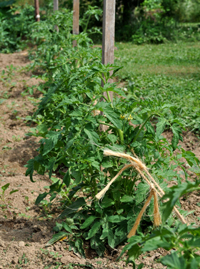
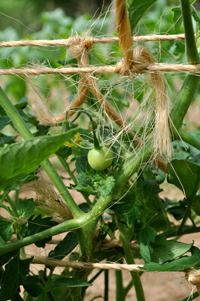 It all begins innocently enough: nothing beats the sweet smell of a little tomato plant on one of your first trips to the greenhouse in Spring (we just don’t bother to start tomato plants by seed—just a preference).
It all begins innocently enough: nothing beats the sweet smell of a little tomato plant on one of your first trips to the greenhouse in Spring (we just don’t bother to start tomato plants by seed—just a preference).
